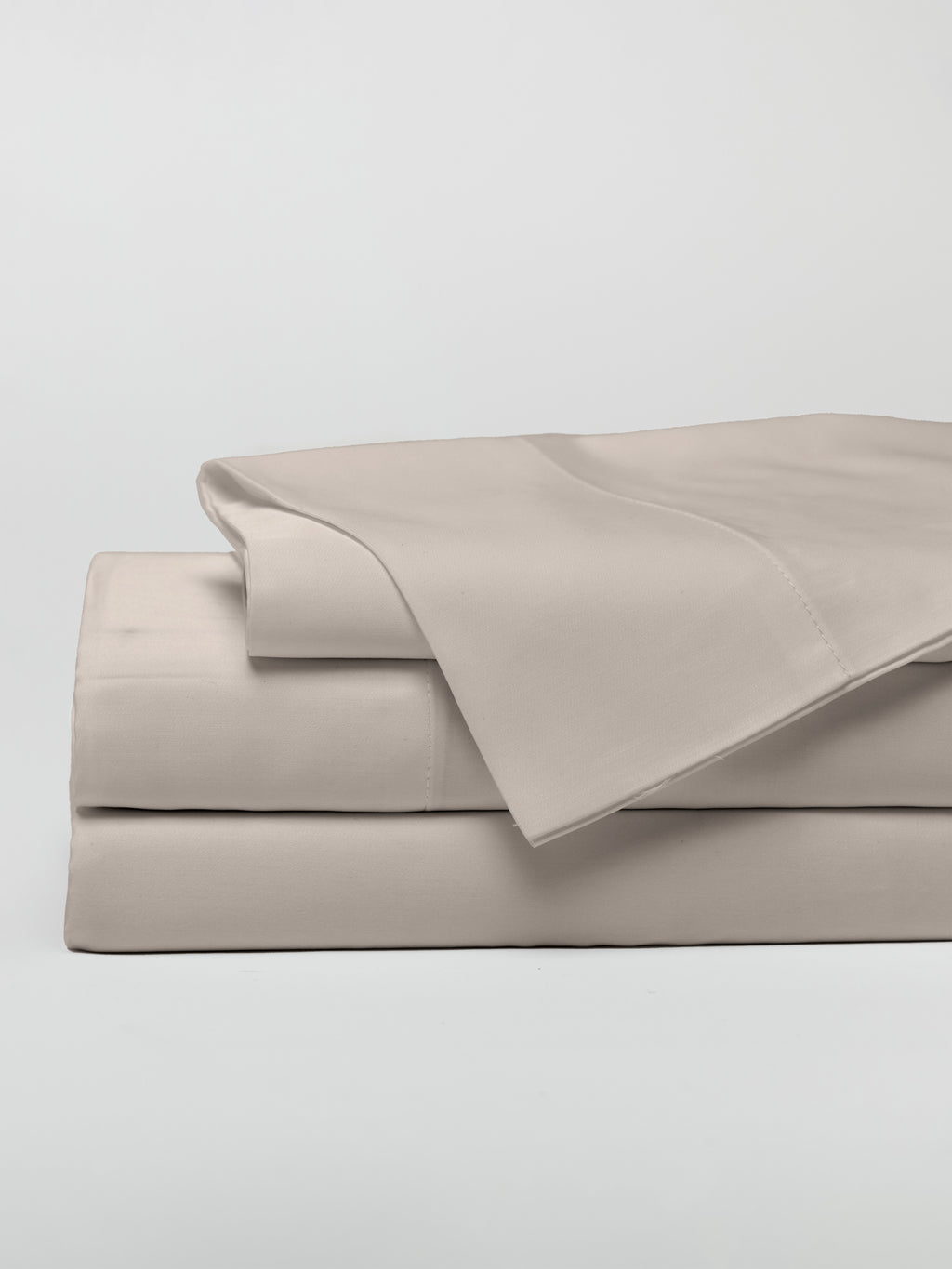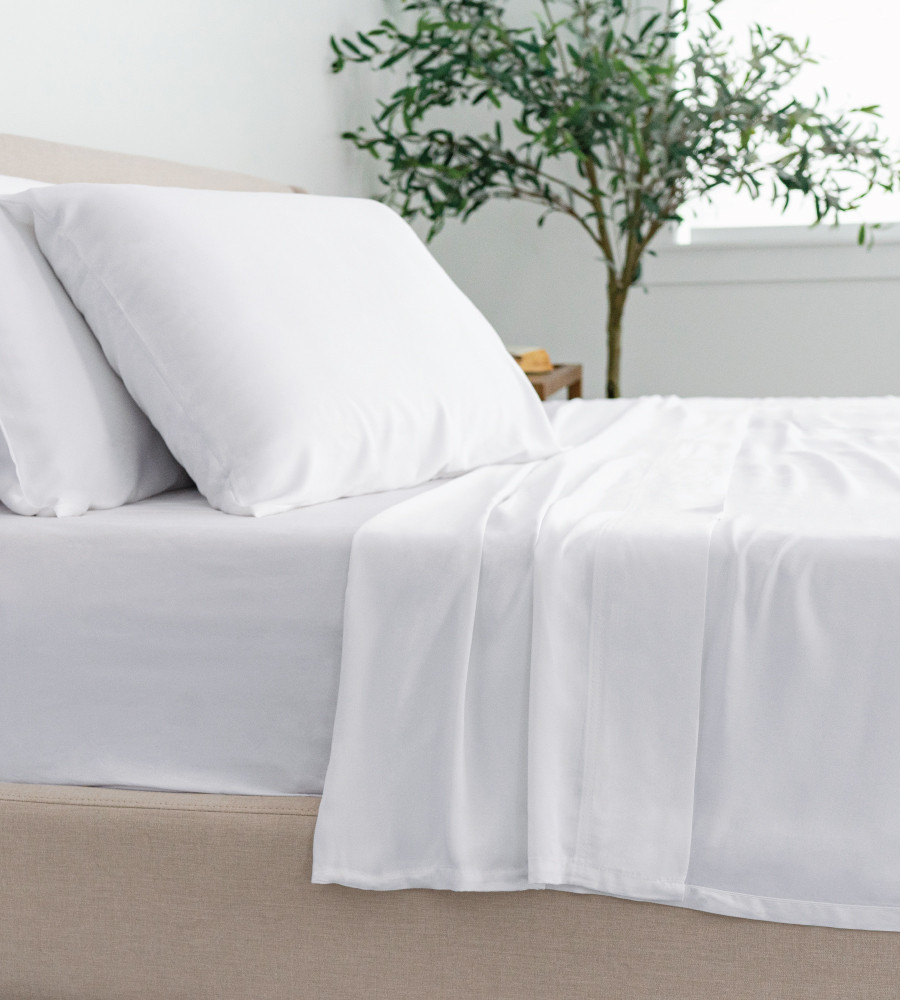What’s the Best Thread Count for Sheets?

Our evaluations and opinions are not influenced by our advertising relationships, but we may earn a commission from our partners’ links. This content is created by TIME Stamped, under TIME’s direction and produced in accordance with TIME’s editorial guidelines and overseen by TIME’s editorial staff. Learn more about it.
The average consumer replaces their pillowcases and sheets roughly every 3.5 to 3.7 years, according to data from the Better Sleep Council, but what really matters is how you treat the bedding over time. Washing your sheets every week, following instructions on how to care for them and rotating between two or more pairs, will help make your sheets last longer. “There isn’t really a yardstick to measure when you should buy new bedding,” says Mary Helen Rogers, vice president of Marketing and Communications, International Sleep Products Association, for the Better Sleep Council. “There are many factors that contribute to it, including even how often you sleep in your bed. The life cycle of your bedding really depends on how you care for it.”
When we finally do decide a major upgrade to our sheets is in order, however, we want the very best. While browsing your options, you may wonder what the best thread count for sheets is and how it should inform your budget and buying decisions. Thread count is a big consideration for most people, but it can also be a confusing one to wrap your head around. In fact, it turns out the entire concept of thread count is a bit misleading. Here, we’ve curated the ultimate 101 guide to the best thread count for sheets, so we can put your most important questions to bed at last.
In general terms, thread count is an indicator of how many threads are in a square inch of fabric, explains Susanne Martinez, the vice president of product development at Sferra. That said, thread count is only one part of the equation, since it does not tell you about the quality of the threads, how they’re woven and finished, and—most importantly—how they feel to sleep in.

When you’re scanning the aisles or paging through the internet to find the best bedding, should you only focus on the highest thread count possible? Not necessarily, Martinez says, since a higher thread count doesn’t automatically equal better quality. Also, materials play a significant role here: “Linens with the same thread count can vary significantly in quality and how they feel to the touch depending on the grade of cotton used, the weaving techniques, finishing, and country of origin,” she says. “The quality of the raw materials used, staple size, weave, yarn type and ply along with the thread count makes up the fabric feel.”
So, if the quality of the thread, how the sheet is made, and the material all contribute to a comfortable night’s sleep under cotton sheets, when does thread count matter? According to the the Bettter Sleep Council, which offers guidelines on bedding, the number does matter “to an extent” but you can probably get the softness you need by buying sheets containing a 400 thread count. While some other bedding expert say don’t go below a 200 count, the Better Sleep Council reports that you don’t really need to go above a 400 count, unless you want to. No matter the thread count, Egyptian or Pima cotton have finer fibers, which means your sheets will have a smoother feel.
Of course, these higher thread count sheets may feel softer but that comes down to the materials not necessarily the thread count. Egyptian cotton may have a high thread count but the reason why it might outperform (in terms of comfort) other kinds of cotton is due to its closely woven long fibers. With so many factors contributing to a soft sheet, thread count may be only one of them.
“For decades, bedding companies made us believe that thread count was the only attribute to look for when shopping for sheets,” says Missy Tannen, the co-founder and chief designer of Boll & Branch. “In reality, a higher thread count doesn’t enhance quality or softness at all.”
How come? Tannen explains that some materials have a scratchier, rougher feeling no matter what the thread count is, so a higher thread count doesn’t necessarily guarantee more luxury. “If you want super-soft bedding that stands the test of time, you need to look at thread quality— not thread count,” she explains.
“Organic cotton has a natural, unmatched softness that conventional cotton, grown with harsh chemicals and synthetic pesticides, simply doesn’t. And thread count tells you nothing about who made it, in what conditions, and with what level of craftsmanship.”
While thread count isn’t the most crucial consideration in shopping for bedding, it does tell you something about the softness and durability of a set of sheets that has high-quality fibers and construction. There’s no magic number when it comes to the best thread count for sheets, but it can be anywhere from 200 to 800, with a sweet spot between 300 and 600, according to Shelby Giard, the vice president of creative and design at Havenly. “Super high thread counts come with a bigger price tag, but don’t always feel better than high-quality fabrics with lower thread counts,” she says. “When it comes down to it, it’s all about quality over quantity — the quality of the threads is more important than the count.”

If you want a ‘good enough’ thread count, try to find a set of sheets with a minimum of a 400 thread count, recommends Jack Dell’Accio, the founder and CEO of Essentia and Hippocrates Health Institute certified sleep coach. He says this thread count is both durable (won’t wear out in the wash) and soft enough for high comfort.
Since thread count isn’t the be-all and end-all for bedding, what other factors should you consider when shopping for sheets? Here, the experts share their suggestions:
Tannen says if you want the highest quality sheets, you must look at the materials used to make them. “Fibers like 100% organic cotton, which is slow grown without synthetic pesticides, will always feel better than materials grown with harmful and irritating chemicals,” she says. “While most brands source conventional cotton from industrial farming complexes, consumers should look for those brands that partner directly with farmers to grow 100% organic cotton completely from scratch.”
Here is a brief guide to the common materials you’ll see when shopping for sheets:
Most people prefer either bamboo or cotton for sleeping. And generally speaking, cotton comes in short, long, and extra-long fibers—otherwise known as staple lengths, Tannen explains. “The difference in lengths offers a difference in quality. The longer a cotton fiber, the softer, stronger, and more durable the fabric it makes,” she says. “To achieve the longest staple lengths possible, brands should partner with skilled organic cotton farmers.”
Giard says the most critical factor when shopping for sheets is fairly simple: they feel good to you, and you can get a good night’s sleep when you snuggle up with them. You must like it if you make your bed every morning and count down until the moment you can crawl back underneath those buttery bed sheets.
And, of course, design matters, too. “You can’t go wrong with a warm neutral or ivory, but feel free to get wild with your sheets,” Giard adds. Stripes, gingham, floral, even an animal print can add a playful touch of personality to your bed scape."
The information presented here is created by TIME Stamped and overseen by TIME editorial staff. To learn more, see our About Us page.



